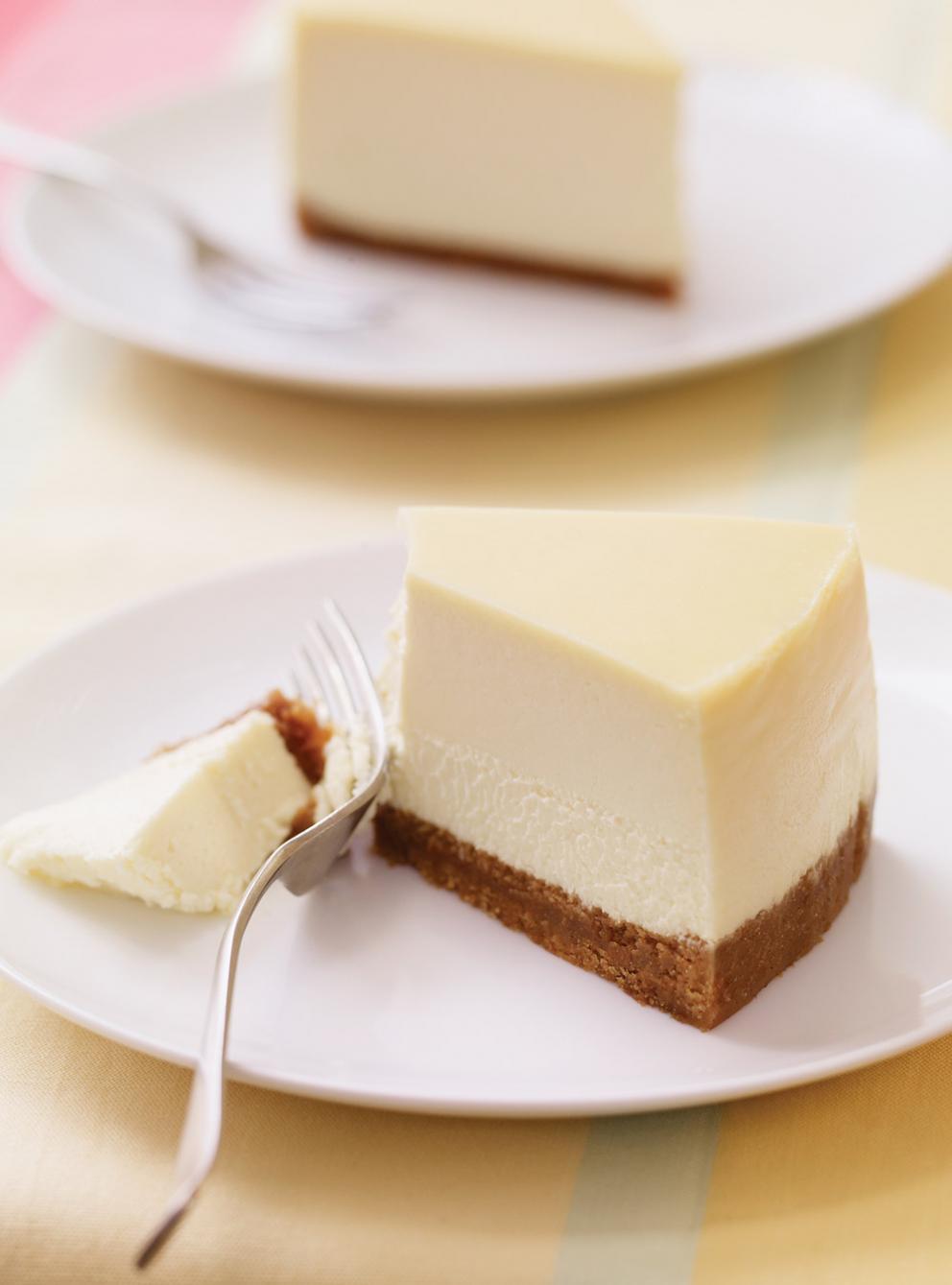Ingredients:
For the base:
200g digestive biscuits (or speculoos for a spicier flavour)
100g melted butter
Prepare the base:
Preheat the oven to 160°C.
Finely crumble the digestive biscuits by crushing them in a plastic bag with a rolling pin or by passing them in a blender.
Mix the biscuit crumbs with the melted butter.
Pack this mixture into the bottom of a springform pan (about 20cm in diameter), pressing well with the back of a spoon to obtain a compact base.
Chill the base while you prepare the cream.
Prepare the cream:
In a large bowl, beat the cream cheese until smooth.
Add the sugar and vanilla, then continue to beat.
Add the flour, then the eggs one at a time, mixing between each addition.
Add the crème fraîche and lemon zest if desired. Mix well to obtain a smooth texture.
For the base:
200g digestive biscuits (or speculoos for a spicier flavour)
100g melted butter
For the cream:
600g cream cheese (Philadelphia type)
150g caster sugar
1 teaspoon vanilla extract
2 tablespoons flour
3 eggs
200ml double cream
600g cream cheese (Philadelphia type)
150g caster sugar
1 teaspoon vanilla extract
2 tablespoons flour
3 eggs
200ml double cream
Zest of 1 lemon (optional, to add a touch of acidity)
Preheat the oven to 160°C.
Finely crumble the digestive biscuits by crushing them in a plastic bag with a rolling pin or by passing them in a blender.
Mix the biscuit crumbs with the melted butter.
Pack this mixture into the bottom of a springform pan (about 20cm in diameter), pressing well with the back of a spoon to obtain a compact base.
Chill the base while you prepare the cream.
Prepare the cream:
In a large bowl, beat the cream cheese until smooth.
Add the sugar and vanilla, then continue to beat.
Add the flour, then the eggs one at a time, mixing between each addition.
Add the crème fraîche and lemon zest if desired. Mix well to obtain a smooth texture.
Assembly and baking:
Pour the cheese mixture over the biscuit base in the tin.
Bake the cheesecake at 160°C for about 50 minutes to 1 hour. The centre should be slightly wobbly but the surface should be firm.
Turn off the oven and leave the cheesecake to cool inside, with the door ajar, to prevent cracking.
Pour the cheese mixture over the biscuit base in the tin.
Bake the cheesecake at 160°C for about 50 minutes to 1 hour. The centre should be slightly wobbly but the surface should be firm.
Turn off the oven and leave the cheesecake to cool inside, with the door ajar, to prevent cracking.
Chilling:
Then let the cheesecake cool completely, then place it in the fridge for at least 4 hours, ideally overnight, so that the flavours blend and the texture is perfect.
Then let the cheesecake cool completely, then place it in the fridge for at least 4 hours, ideally overnight, so that the flavours blend and the texture is perfect.
Tasting:
Serve your cheesecake plain, or with a red fruit coulis, fresh fruit, or even salted butter caramel.`
Origin of Cheesecake:
Cheesecake, or cheese-cake, gâteau au fromage in French-speaking Canada, is a North American variety of cheesecake. It is a sweet dessert composed of a mixture of cream cheese, eggs, sugar and vanilla and/or lemon flavors, on a crust of biscuit crumbs or a sponge cake.
Derived from similar European recipes, two cheesecake recipes in the United States find their origins in the neighborhoods of German and English immigrants, especially in Philadelphia, in New York, among Jews and Italians in New York. What Americans today call New York cheesecake is made with an industrial cheese3, a salty fresh cheese that must have replaced German Quark (used in Käsekuchen). This cheesecake was generalized by New York Jewish delicatessen and can be eaten with a red fruit coulis. The Italian version is based on ricotta.

Comments
Post a Comment